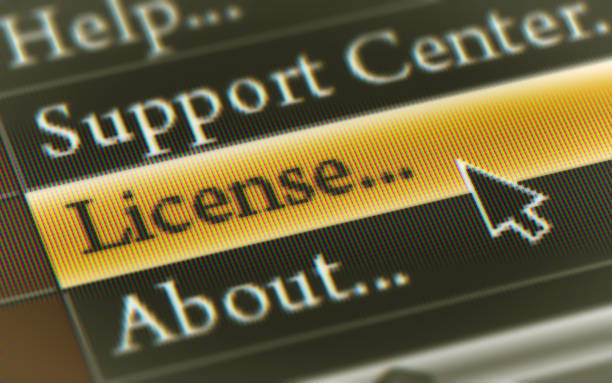In today’s dynamic global trade environment, efficiency, compliance, and credibility define business success. For Indian exporters, navigating customs procedures and meeting compliance requirements can be challenging. However, government initiatives such as the Advance License (also known as Advance Authorization) and AEO Registration (Authorized Economic Operator) simplify these processes, offering significant benefits in cost reduction, time savings, and global recognition. By understanding how these two programs complement each other, businesses can not only improve trade efficiency but also strengthen their competitive edge in international markets.
Understanding the Advance License Scheme
The Advance License Scheme, introduced by the Directorate General of Foreign Trade (DGFT) under India’s Foreign Trade Policy (FTP), allows manufacturers and exporters to import inputs duty-free for producing export goods. The goal is simple — to make Indian exports more competitive by reducing input costs.
Key Features of the Advance License:
- Duty-Free Import: Raw materials, components, and consumables used in export production can be imported without paying customs duties.
- Export Obligation: Exporters must fulfill an export commitment within a specified timeframe, typically 18 months from the date of license issuance.
- Transferability: Advance Licenses are non-transferable but can be used by supporting manufacturers under specific arrangements.
- Eligibility: Both manufacturer-exporters and merchant-exporters tied with supporting manufacturers can apply.
Example:
A textile manufacturer exporting garments to Europe can import fabrics, zippers, and buttons without paying customs duty under the Advance License Scheme, significantly reducing production costs and increasing profit margins.
Benefits of Obtaining an Advance License
- Reduced Import Costs: Eliminates customs duties on raw materials, improving profitability.
- Enhanced Cash Flow: By avoiding upfront duty payments, businesses maintain better liquidity.
- Increased Export Competitiveness: Enables exporters to offer products at globally competitive prices.
- Simplified Documentation: DGFT provides an online application system through the DGFT Portal, making the process transparent and efficient.
- Flexibility in Imports: Exporters can import quality materials that may not be available locally, ensuring consistency and global quality standards.
Example:
An automotive component manufacturer importing high-grade steel under an Advance License saves up to 10% on costs, allowing them to quote more competitively in global tenders.
Understanding AEO Registration (Authorized Economic Operator)
While the Advance License Scheme focuses on cost efficiency, AEO Registration emphasizes trade facilitation and compliance. The Authorized Economic Operator (AEO) program, initiated by Indian Customs, recognizes businesses that maintain secure, compliant, and efficient international supply chain practices.
This certification provides trusted exporters, importers, and logistics providers with various operational benefits such as faster clearances, reduced inspections, and global recognition.
Types of AEO Certifications:
- AEO-T1: Basic level for small and medium enterprises (SMEs).
- AEO-T2: Intermediate level for compliant and established businesses.
- AEO-T3: Advanced level for large and high-volume exporters.
- AEO-LO: For logistics operators such as freight forwarders and customs brokers.
Key Benefits of AEO Registration
- Faster Customs Clearance: Priority processing and fewer physical inspections reduce shipment delays.
- Reduced Documentation: Simplified procedures and paperless clearances.
- Deferred Duty Payments: Allows businesses to pay customs duties later, easing cash flow.
- Global Recognition: AEO status is recognized under Mutual Recognition Agreements (MRAs) with other countries, improving credibility in international trade.
- Enhanced Business Trust: Certified businesses are viewed as reliable and secure supply chain partners by customs authorities and global clients.
Example:
A pharmaceutical exporter with AEO-T2 certification experiences 40% faster customs clearance times, ensuring timely delivery of perishable medical goods to overseas buyers.
How Advance License and AEO Registration Work Together
The Advance License and AEO Registration serve different but complementary purposes in international trade.
| Aspect | Advance License | AEO Registration |
| Focus | Duty-free import of raw materials | Secure and compliant supply chain |
| Regulatory Body | DGFT (Directorate General of Foreign Trade) | Indian Customs |
| Primary Benefit | Reduces import costs | Speeds up customs clearances |
| Target Users | Exporters and manufacturers | Exporters, importers, logistics providers |
| Outcome | Cost efficiency | Trade facilitation and trust |
When combined, these schemes enable exporters to operate more efficiently — reducing financial burden through duty exemptions and expediting logistics through customs facilitation.
Example:
A furniture exporter with both Advance License and AEO-T2 certification can import wood and fittings duty-free and get customs priority clearance, cutting delivery time by 30%.
Steps to Apply for an Advance License
- Register with DGFT: Obtain an Importer Exporter Code (IEC) if not already registered.
- File Application: Apply online through the DGFT portal using ANF-4A form.
- Submit Documents: Include details like export products, bill of materials, import/export values, and past export performance.
- Verification and Approval: DGFT reviews your application and issues the license electronically.
- Fulfill Export Obligation: Ensure timely export of finished goods as per the license terms.
Steps to Apply for AEO Registration
- Eligibility Check: Ensure your organization has handled at least 25 import/export documents in the past year.
- Application Submission: File Form AEO-T1 or T2 with Indian Customs through the ICEGATE portal.
- Documentation: Provide compliance records, financial statements, site plans, and supply chain security measures.
- Verification: Customs officials conduct on-site verification of your operations and records.
- Approval: Once verified, you receive your AEO certification with an official certificate.
Why Businesses Should Combine Both Schemes
Combining Advance License and AEO Registration can revolutionize an exporter’s operations:
- Financial Efficiency + Trade Facilitation: Reduced duties paired with faster clearances mean higher profitability and faster delivery cycles.
- Compliance and Credibility: Demonstrates adherence to global trade standards, improving buyer trust.
- Risk Reduction: Customs authorities view AEO-certified businesses as low-risk, reducing inspection frequency and delays.
- Improved Global Partnerships: Many international buyers prefer sourcing from AEO-certified and duty-exempt manufacturers.
Case Example:
An electronics manufacturer from Pune combined Advance License benefits with AEO-T2 certification. Result: 25% cost reduction in imports, 35% faster shipping, and entry into three new international markets within a year.
Common Challenges and How to Overcome Them
- Complex Documentation: Many exporters struggle with preparing detailed applications for DGFT or Customs. Partnering with professional consultants simplifies the process.
- Policy Updates: Both schemes undergo periodic revisions; staying informed ensures continued compliance.
- Data Accuracy: Maintaining precise export records is crucial to avoid rejection or cancellation.
The Future of Indian Trade Compliance
As India strengthens its position in global supply chains, compliance initiatives like Advance License and AEO Registration will become essential. Both are designed to make Indian exports globally competitive — one through cost efficiency and the other through operational credibility.
The government’s ongoing digitalization efforts — such as the DGFT online portal and Customs ICEGATE integration — continue to make these processes faster and more transparent.
Conclusion:
For exporters aiming to thrive in global markets, combining Advance License and AEO Registration is a winning strategy. Together, they reduce costs, enhance credibility, and improve operational efficiency — empowering your business to grow faster and trade smarter. Whether you’re a manufacturer, exporter, or importer, it’s time to leverage these government-backed benefits.








Leave a Reply